360-degree Ultrasonic Mouse Repellent Plug-In with LED Strobe for Homes and RVs
$59.99 Original price was: $59.99.$39.99Current price is: $39.99.
Stop the late-night scurrying without poisons or mess. The 360° Ultrasonic Mouse Repellent Plug-In uses variable high-frequency sound and an optional LED strobe to make rooms uncomfortable for mice while staying quiet for people. Ultrasound targets the range rodents hear that humans do not, and it works best alongside sealing gaps and tidying food sources. Look for an EPA Establishment Number on the package to confirm it is a regulated pesticidal device.
Description
When mice turn your quiet kitchen or garage into a nightly obstacle course, a simple plug-in can feel like a lifeline. The 360-degree Ultrasonic Mouse Repellent Plug-In with LED Strobe for Homes and RVs is built for people who want a clean, low-mess way to push rodents back to the outdoors and keep it that way. It emits high-frequency sound and timed light flashes that are designed to make your space uncomfortable for mice and other small rodents while staying safe for everyday home use.
Scientists and regulators are clear that these are “pesticidal devices” rather than chemicals, and that they work best as part of a broader prevention plan that includes sealing entry points and sanitation (honest expectations that help you get real results).
Key Customer Benefits
- Cleaner control with no poisons or sticky mess. This plug-in is a “pesticidal device,” which means it relies on sound and light rather than chemical ingredients. That makes it a practical first line for kitchens, garages, warehouses, and RVs when you want to avoid baits or sprays while you tighten up sanitation and exclusion. (US EPA)
- Targets how mice actually sense the world. Mice hear well above the human range. Research shows mouse hearing spans roughly 1 to 100 kilohertz, with strong sensitivity between about 10 and 50 kilohertz. A 360 degree ultrasonic output aims to make your rooms acoustically uncomfortable for small rodents so they choose quieter territory. (PMC)
- Works best as part of real Integrated Pest Management. Pair the repeller with sealing gaps, tightening food storage, and removing clutter to cut off the reasons mice came inside. Health agencies and university IPM programs repeatedly recommend exclusion and sanitation as the foundation. Use the device to reduce pressure while you close entry points. (CDC)
- Optional LED strobe adds another stimulus. Light flashes can be annoying for some rodents and may help in dark storage zones. Evidence from the field is mixed and mostly anecdotal, so think of the strobe as a situational add-on rather than the primary tactic. Use it in unoccupied areas like garages or sheds if you want an extra nudge. (Animal Capture Wildlife Control)
- Sets realistic expectations from day one. Independent reviews and extension papers have found ultrasonic repellents to be inconsistent in real homes. That does not make them useless. It means you will get the best results when you combine this tool with sealing, traps in safe locations, and tidier storage. (Arizona Repository)
- Mindful of people and pets when placed correctly. A human exposure study found short sessions with common ultrasonic repellers did not cause measurable harm, although some people, especially younger listeners, can find lower frequency settings annoying. Place units away from cribs and desks, and favor higher frequencies in lived-in rooms. (PubMed)
- Plug in and forget the batteries. For busy homes and mobile setups like campers, a plug-in rodent deterrent for garage and RV life keeps pressure on pests quietly in the background while you handle the real fixes such as exclusion and food control. Use one unit per room for best coverage, and treat open floor plans as separate zones. (CDC)
Product Description
What this device is
The 360-degree Ultrasonic Mouse Repellent Plug-In with LED Strobe for Homes and RVs is a small outlet-powered unit that emits high-frequency sound and optional light bursts to make indoor areas uncomfortable for mice. In regulatory terms, it is a pesticidal device. That means it does not use active chemical ingredients and it is governed under the U.S.
EPA’s device rules rather than the pesticide registration program. For you, the homeowner, this mainly means two things. First, it is a low-mess option to pair with sealing and sanitation. Second, manufacturers are not required to prove field efficacy to the EPA the way chemical products are. You should use it as part of a broader plan, not as a solo fix.
How it works
Mice hear far above the upper limit of human hearing. Multiple laboratory and review papers place mouse hearing from roughly 1 to 100 kilohertz, with strong sensitivity in the 10 to 50 kilohertz range, well beyond what we can hear. The device plays in that ultrasonic neighborhood so normal living sounds are untouched while the acoustic environment becomes irritating for rodents. Think of it like turning a room into a constant, high-pitched chatter that you cannot hear but a mouse would rather avoid.
Ultrasonic waves behave like light in some ways. They bounce, get absorbed by soft materials, and do not travel well through walls. Independent testing and expert guides note that most plug-ins only influence a short radius around the unit, often a room or two. Treat each open space as its own “acoustic zone” and do not expect one device to cover a whole floor.
What makes this 4-in-1 model different
This unit combines wide-angle ultrasonic output, pulsed frequency shifts, and an optional LED strobe. The first two features matter because rodents can get used to a steady sound. Frequency modulation and pulsing vary the stimulus so the “newness” lasts longer. University and agency reviews have shown that rodents can habituate to simple ultrasonic tones, which is one reason results vary from home to home. A device that changes pattern is a step up from a constant tone, especially while you are closing entry points and removing food sources.
The LED strobe is best viewed as an extra nudge in dark storage areas such as garages or RV bays. There is enthusiastic anecdotal support for flashing lights from users and wildlife-control blogs, yet scientific evidence is still thin. Use the strobe in non-occupied spaces to avoid annoyance, and keep expectations grounded.
Why it works best as part of Integrated Pest Management
Every credible rodent program starts with exclusion and sanitation. Seal gaps the width of a pencil, store food in tight containers, declutter wall lines, and keep floors clean. Extension publications and school IPM plans repeat this message again and again because it addresses the reasons mice enter in the first place. The plug-in helps reduce pressure while you do the lasting fixes. If you still see activity, add snap traps in protected stations along travel paths while the repeller continues to run.
One of my regulars runs a small baking side business out of her home kitchen. In late autumn, she noticed droppings near the water heater closet that adjoins the garage. We plugged a 360 degree ultrasonic mouse repellent plug in in the garage outlet closest to that shared wall and turned on the frequency-shift mode. The same afternoon we vacuumed up grain dust, moved paper bags into sealed bins, and stuffed an obvious service-line gap with a steel-fiber cloth before sealing with polyurethane caulk.
Over the first week, the evening scratching stopped and trail camera clips showed fewer visits to the water heater area. Two snap traps we placed in tamper-resistant boxes along the garage wall caught a pair of stragglers on nights three and six, then nothing for the next month. Was it the device alone? No. It was the combination of sound pressure, sanitation, sealing, and strategic trapping that solved it. That is how these tools pay off in real homes. The blended approach also aligns with what extension experts and independent reviewers recommend, which is to avoid relying on ultrasonic devices by themselves.
Product Specifications
| Item | Typical Value / Range | Why it matters |
|---|---|---|
| Power & Plug | AC 100–240 V, 50–60 Hz; draw 3–5 W | Standard wall-outlet use, low energy draw. |
| Ultrasonic frequency | Variable sweep, roughly 20–65 kilohertz; some models publish discrete tones around 25–32 kHz | Rodents hear well above human range, frequency shifting helps reduce getting used to a single tone. |
| Coverage per unit | About 800–1,200 sq ft per open room, some manuals claim up to 1,600 sq ft. Walls and soft furnishings reduce reach. | Treat each room or open zone as its own acoustic space, use multiple units for multi-room layouts. |
| Acoustic pattern | Wide-angle or 360 degree dispersion via front and side emitters | Broader spread reduces dead spots directly in front of the unit only. |
| LED strobe | Present on 4-in-1 versions, for example, 9 LED strobe with mode selector (ULTRA, TRANS, DUO) | Adds a visual stimulus for dark garages or storage rooms. Use where the flashing will not bother people. |
| Body material | ABS plastic housing | Durable, common appliance polymer, wipe-clean. |
| Size (housing) | Around 98 × 60 × 58 mm to 4.1 × 3.2 × 2.6 in, varies by brand | Compact enough for outlets above baseboards, check that furniture does not block the face. |
| Operating temperature | 0 to 40 °C (32 to 104 °F) typical | Standard indoor environments. |
| Certifications & labels | Many units list CE, RoHS, FCC marking and an EPA Establishment No. on packaging, verify on your unit | Shows electrical and materials compliance and the factory EPA establishment identity for pesticidal devices. |
| Regulatory class | Pesticidal device under U.S. FIFRA, no EPA efficacy pre-approval | EPA regulates production and labeling, not proves it works like a registered pesticide. |
| Placement notes | One per room, sound does not pass through walls, avoid carpets or curtains blocking the face | Hard, open surfaces reflect sound better, fabric absorbs it. |
| Safety around people & pets | Generally safe for people and non-rodent pets when used as directed, do not use near pet rodents such as hamsters, guinea pigs, or rabbits | These pets can hear the output and may be distressed. Observe sensitive pets. |
| Mouse hearing context | Adult mice detect roughly 1–100 kHz with high sensitivity around 10–50 kHz | Explains why humans do not hear it and mice do. |
How to Use and Install This 360 Degree Ultrasonic Mouse Repellent
Before you plug it in
Ultrasonic repellers work best when you pair them with smart prevention. Do a fast walkthrough and seal the obvious gaps a mouse can use. A pencil-width opening is enough for a house mouse, and a half inch is enough for a rat. Stuff small holes with steel or copper wool, then seal over the top with caulk or mortar so rodents cannot pull it out. Add door sweeps and cover pipe or cable penetrations with rodent-proof materials. This one step immediately lowers traffic and makes your repeller more effective.
If you see droppings or nesting, clean them up safely. Ventilate, wear gloves, and wet the area with disinfectant or a fresh bleach solution before wiping, then double-bag waste. This protects you and avoids stirring dust that can carry disease.
Where to place the unit in a room
Ultrasound behaves more like light than like a scent. It reflects off hard surfaces, gets absorbed by soft furnishings, and does not travel through walls or closed doors. For best reach, use one plug-in per room or open zone, and give the face of the unit clear line of sight into the space. Avoid tucking it behind a couch, curtain, refrigerator, or pallet stack. Kitchens and garages with more hard surfaces often perform better than carpeted living rooms.
If your home has an open plan, treat each open area as its own acoustic zone. In long rooms, plug the repeller into a central outlet that looks across the space rather than into a wall. In bedrooms, consider using lower settings or place the device away from beds, especially if anyone is sensitive to high pitches, even though the output is beyond normal adult hearing.
How to set modes and why frequency changes matter
Start in the frequency-sweep or “auto” mode if your unit offers it. Varying the pitch and pulse pattern makes the sound less predictable to rodents and can slow habituation. Fixed single tones are easier for pests to ignore over time, especially if food remains reachable. If your model has an LED strobe, use it in storage spaces, garages, or sheds rather than occupied rooms. The strobe is a secondary stimulus and is best reserved for dark, low-traffic zones.
A 14-day setup plan
Day 0 to Day 2: Inspect, seal, place, and sanitize
- Walk the perimeter inside and outside. Seal pencil-wide gaps, add door sweeps, and close openings around pipes and cables. Move bulk food into lidded bins.
- Plug one 360 degree ultrasonic mouse repellent into each active room. Face the open space, not a wall. Keep the face clear of curtains or cabinets. Turn on frequency sweep. Use the strobe only in non-occupied areas.
- Clean droppings safely with wet methods and disinfectant. Do not dry sweep.
Day 3 to Day 7: Verify activity and adjust
- Place a few traps in protective stations along wall lines where droppings were found. The device and traps complement each other. If traps are empty after several days, move them to new wall segments.
- If you still hear scratching in a certain room, add a second unit at the opposite end or relocate the first to improve cross-coverage. Hard rooms, such as kitchens and utility spaces, often give better “bounce.”
Day 8 to Day 14: Close the loop
- Re-inspect your seals. Caulk over any wool you used so it cannot rust or be pulled free. Confirm that vents, dryer ducts, and service penetrations are tight.
- Expect smaller problems to quiet down within a week, while heavier infestations can take two to four weeks once trapping and exclusion are consistent. Stay with the plan until you have two weeks of no signs.
Special placement notes for garages, warehouses, and RVs
Garages and warehouses: Treat each bay or large room as its own zone. Position units to look across aisles, not into shelving. Rodent trails often hug walls, pallet edges, and utility chases, so angle devices to cover these lines. Hard floors help ultrasonic reflection.
RVs and campers: Rodents love storage bays, water and electrical compartments, and the engine area. Use one plug-in in the living space during storage and consider a dedicated under-hood ultrasonic unit that ties to the battery for the engine bay. Owners often add early-warning sticky boards in service bays so they notice activity fast. Continue to seal cable and plumbing penetrations from below. RVers report that combining sealing, traps, and targeted ultrasound beats relying on any single tactic.
Safety and pet considerations
EPA treats plug-in ultrasonic units as pesticidal devices, which means they require compliant labeling and an EPA Establishment Number on the box. Follow the manual, and do not use near pet rodents such as hamsters or guinea pigs. Keep the LED strobe off in occupied bedrooms. Clean rodent waste safely as described above.
Common Issues
If you are not seeing improvement after a week, the most common cause is blocked sound. Move the unit so it faces open space, not into furniture or drapes. Add a second unit to long rooms or to rooms that are separated by doorways. Confirm the outlet has power and the status light shows the unit is operating. Then double-check that food and clutter are not rewarding the rodents for staying. User manuals and industry guides agree that ultrasound does not go through walls, so plan for one unit per room.
Frequently Asked Questions
Do ultrasonic mouse repellents actually work in real homes?
Sometimes, and usually only as part of a bigger plan that includes sealing entry points, tightening food storage, and, if needed, trapping. University extension reviews describe ultrasonic devices as inconsistent. A Cooperative Extension bulletin from the University of Arizona concluded that commercially available sonic and ultrasonic devices were largely ineffective on their own, and that pests often habituate to steady sound. Use your 360 degree ultrasonic mouse repellent plug in as a pressure reducer while you fix the reasons mice moved in.
How many units do I need for an average house or garage?
Sound does not pass through walls or solid doors. Think one unit per room or per open zone. Extension guidance and user manuals emphasize that soft furnishings absorb ultrasound and corners create dead spots, so plan coverage room by room rather than expecting a single device to protect a whole floor.
How long until I notice a difference?
If you have a light, recent problem and you combine the repeller with sealing and sanitation, you can see improvement within a week. Heavy or established infestations take several weeks and almost always require traps alongside the device. Field guidance and extension documents underline that ultrasound is not a stand-alone fix.
Will it bother my pets or kids?
Humans generally cannot hear above twenty kilohertz. Mice hear far higher. Multiple studies place mouse hearing from about one kilohertz up to roughly one hundred kilohertz, well above our range. That said, some people may still notice lower frequency bleed or feel annoyed by indicator beeps, so place units away from cribs and desks. Do not use ultrasonic repellents in homes with pet rodents such as hamsters, gerbils, rats, or guinea pigs, since they can hear the output and may be stressed by it.
Does the LED strobe make a difference?
Treat the strobe as a helper in dark, unoccupied areas such as garages, storage rooms, and sheds. There is strong anecdotal support in user communities, but rigorous evidence is limited. Use it where it will not annoy people or pets. The main wins still come from exclusion, sanitation, and targeted trapping.
Can mice get used to the sound?
Yes. Habituation is a major reason results vary. Devices that sweep or pulse frequencies are designed to slow that process, but you should still rotate placement and keep up with sealing and food control so rodents have fewer reasons to push through the annoyance. Extension reviews explicitly discuss habituation as a limitation.
What frequency range targets mice, and why can I not hear it?
Humans hear about twenty hertz to twenty kilohertz. Mice hear roughly one to one hundred kilohertz, with strong sensitivity in the tens of kilohertz. Ultrasonic devices aim into that higher band so the room becomes acoustically uncomfortable for rodents without adding audible noise for most people.
Do these devices have EPA approval?
Ultrasonic repellents are regulated as pesticidal devices in the United States. They must display an EPA Establishment Number, which identifies where they were made. An establishment number is not an EPA approval of safety or effectiveness. Devices are not registered like chemical pesticides, and EPA does not pre-test them for efficacy. This is why credible agencies urge realistic expectations and proper IPM.
Why do some reviews swear by them while others say they are useless?
Two reasons come up over and over in threads. First, homes where people sealed gaps and tightened storage often report fewer sightings, which they credit to the device, while the real win was the combined effort. Second, hungry or cold rodents will tolerate unpleasant sound to reach food or warmth, so you see “worked at first, then stopped” experiences. Forum discussions capture both sides clearly.
Will ultrasound go through walls, cabinets, or stacked boxes?
No. Ultrasound reflects off hard surfaces and gets absorbed by soft ones. It does not travel through walls or closed doors. That is why placement with a clear line of sight into the room matters, and why garages and utility rooms with hard surfaces tend to perform better than heavily furnished living rooms.
Is it safe to run in a nursery, bedroom, or home office?
If you choose to use one in a sleeping or work area, put it on a far wall at a higher frequency setting and turn off the strobe. Some people, especially those with very good high-frequency hearing, report annoyance around certain devices. If anyone notices discomfort, relocate the unit to an adjacent hallway and keep entry points sealed. These recommendations align with lab hearing ranges and practical reports.
What should I do if it does not seem to help after a week?
Troubleshoot the simple things. Move the unit so it faces open space rather than into furniture. Add another unit to long rooms. Re-seal gaps the width of a pencil. Remove open food and cardboard clutter. Add tamper-resistant snap traps along wall lines for two to four weeks. These steps are echoed across extension guidance and working-pro tips.
Can I use it in an RV or warehouse bay?
Yes, with placement savvy. Treat each bay or open zone as its own space. Angle units to look across aisles and along wall lines where rodents travel. RV owners often pair a plug-in for the living area with sealing of service penetrations and, if needed, a dedicated under-hood repeller for the engine bay. Community reports show that the combined approach outperforms any single tactic.
Conclusion
If you want a cleaner way to push rodents out while you fix the reasons they came in, a 360 degree ultrasonic mouse repellent plug in is a useful helper rather than a silver bullet. The science and field experience say the same thing. These devices can add short-term pressure, especially when they sweep or pulse frequencies that mice hear clearly, while humans generally do not. Pair that with sealing pencil-wide gaps, tidier storage, and targeted trapping, and you have a plan that actually holds.
Be choosy when you buy. Look for a unit that lists an EPA Establishment Number on the package or manual, since ultrasonic repellents are regulated as pesticidal devices. Remember, an establishment number identifies where it was made and it is not the same as an EPA registration that chemical products carry. Manage expectations, since university extension reviews have long found ultrasonic results to be inconsistent on their own, especially once rodents discover a reliable food source.
Here is your simple path forward. Plug in one unit per room you want to protect, set a frequency-sweep mode, keep the LED strobe for unoccupied areas, and do a fast weekend of exclusion and cleanup. Give it a week, then adjust placement and add stations or traps where activity lingers. That is textbook integrated pest management and it is how pros get durable results without overusing poisons.
Related products
-
Sale!
1-Pack Ultrasonic Pest Repeller Plug-In with Night Light – Indoor Electronic Repellent
$18.99Original price was: $18.99.$16.88Current price is: $16.88. Buy Now -
Rodent Repellent Indoor Ultrasonic Plug-In for Home, Attic, Garage, Warehouse (1 Pack)
$32.99 Buy Now -
2025 Upgraded Outdoor Cat Repellent With Ultrasonic Protection
$69.99 Buy Now -
2025 Solar Ultrasonic Animal Repeller, Motion-Activated Cat and Deer Deterrent
$68.99 Buy Now
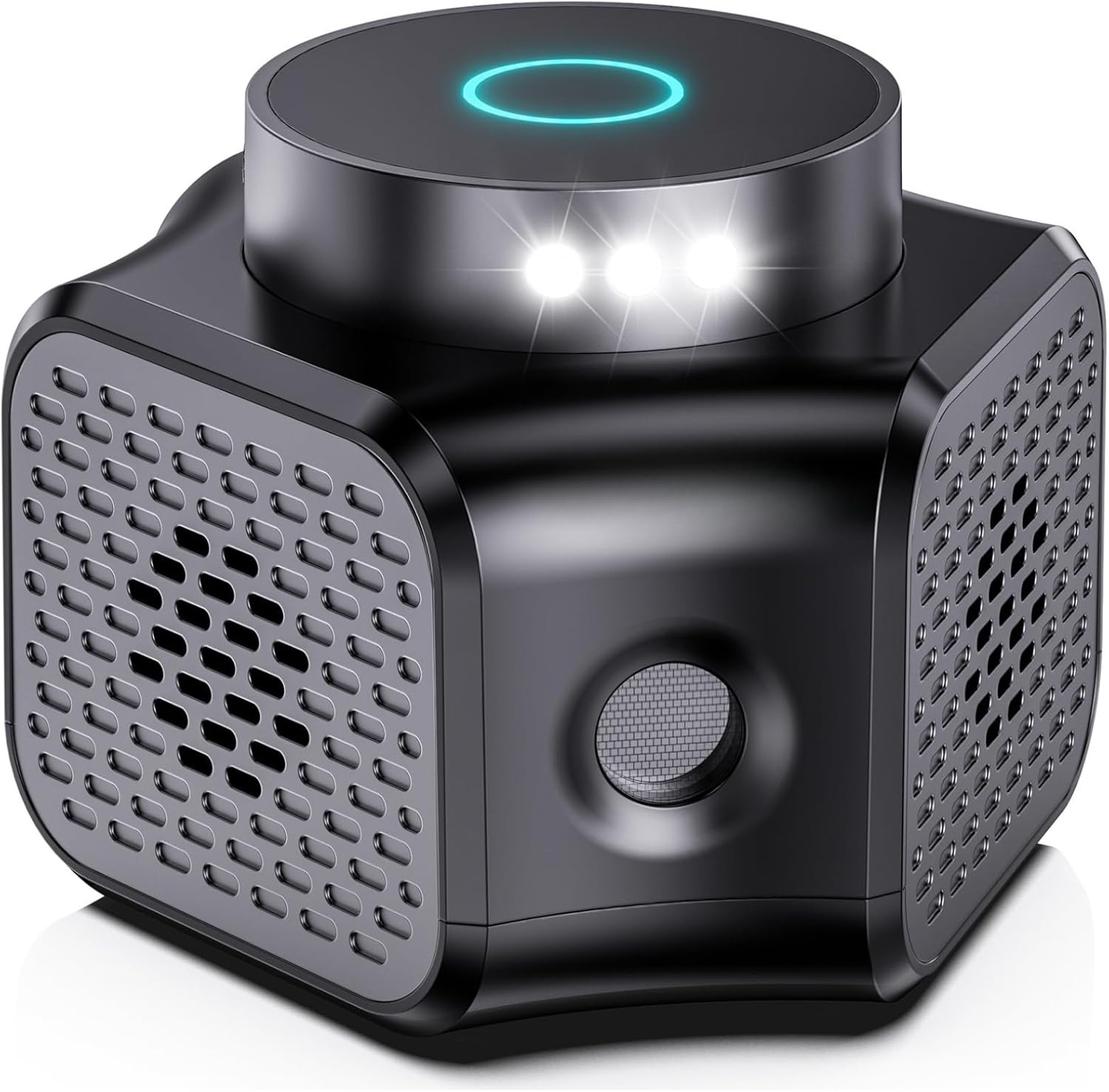
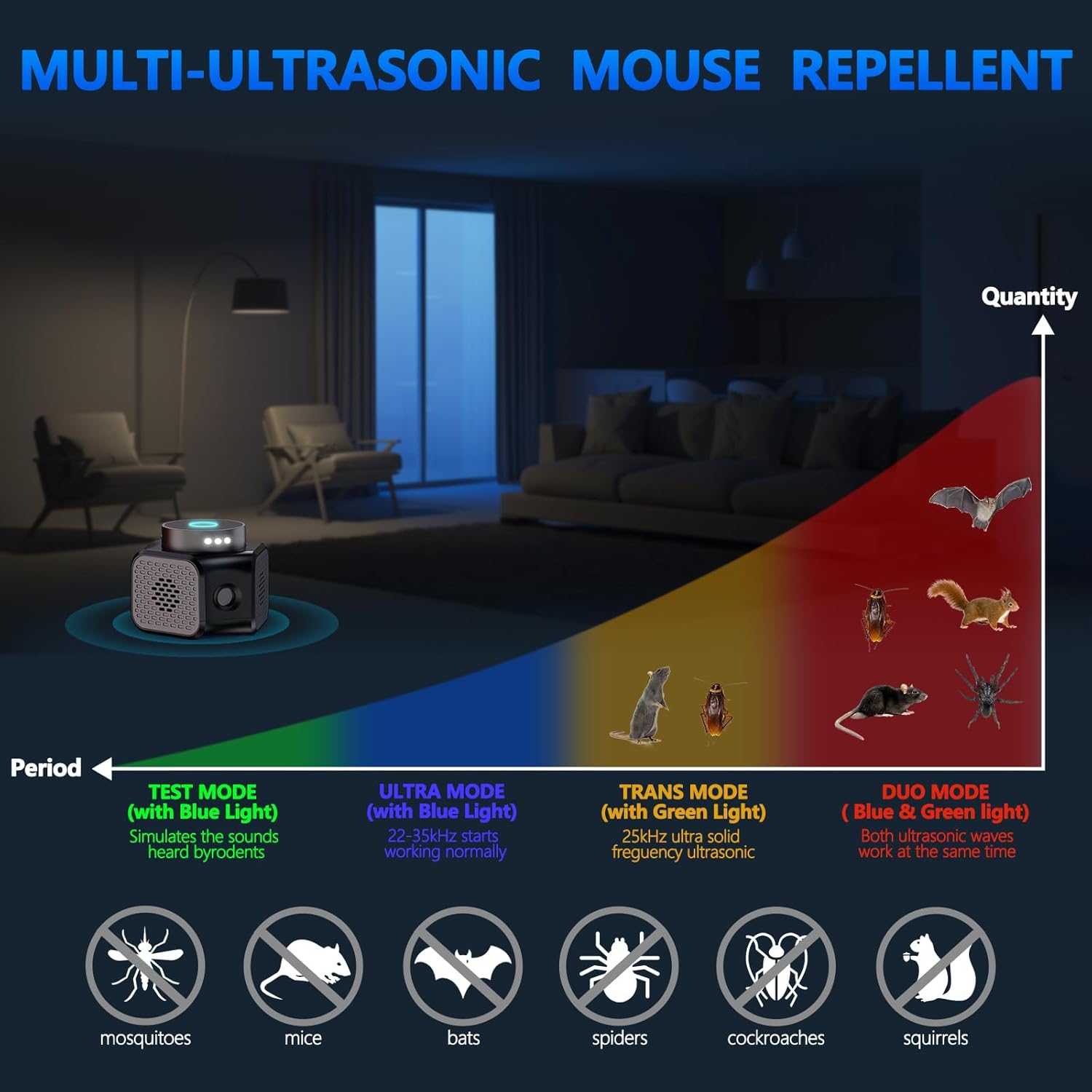
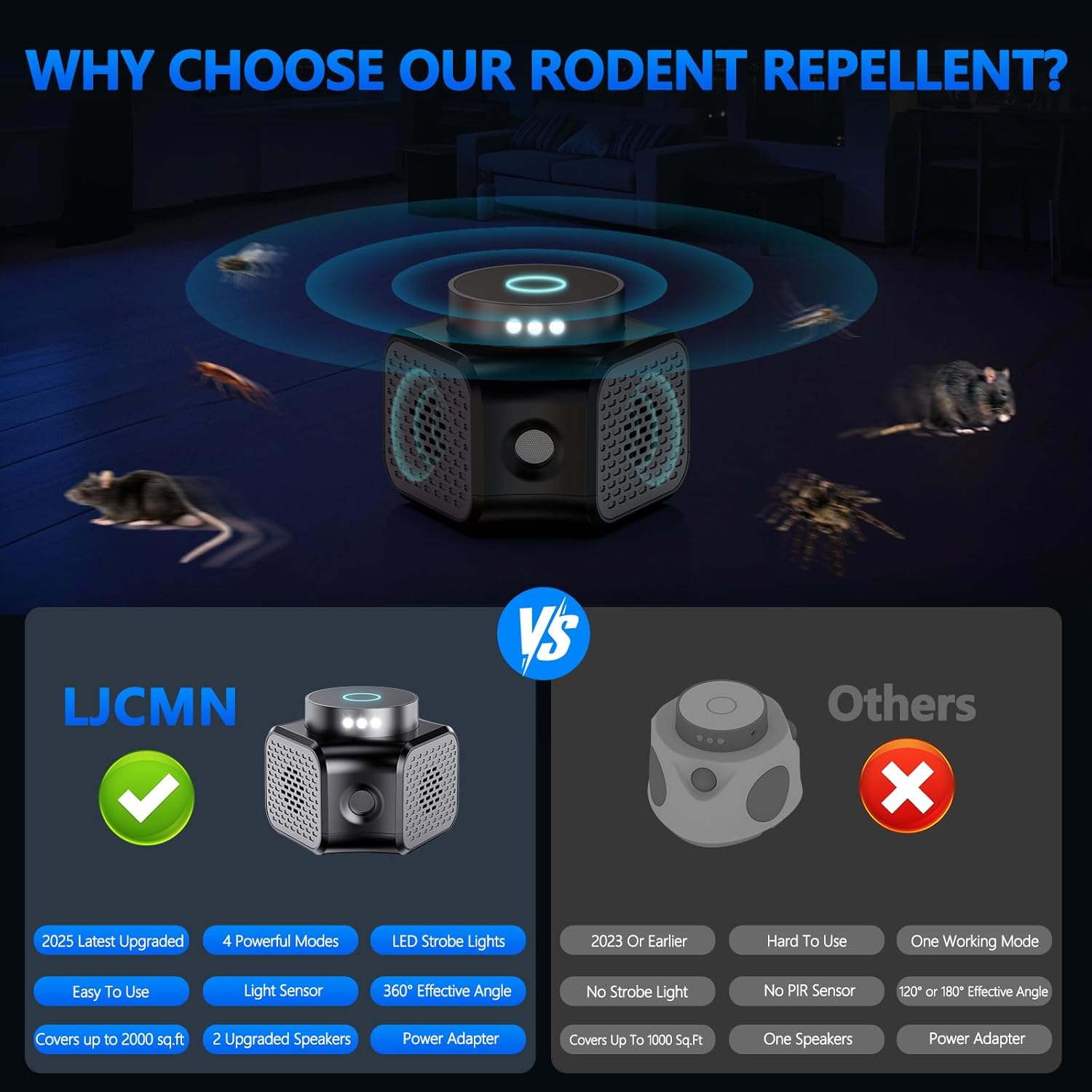
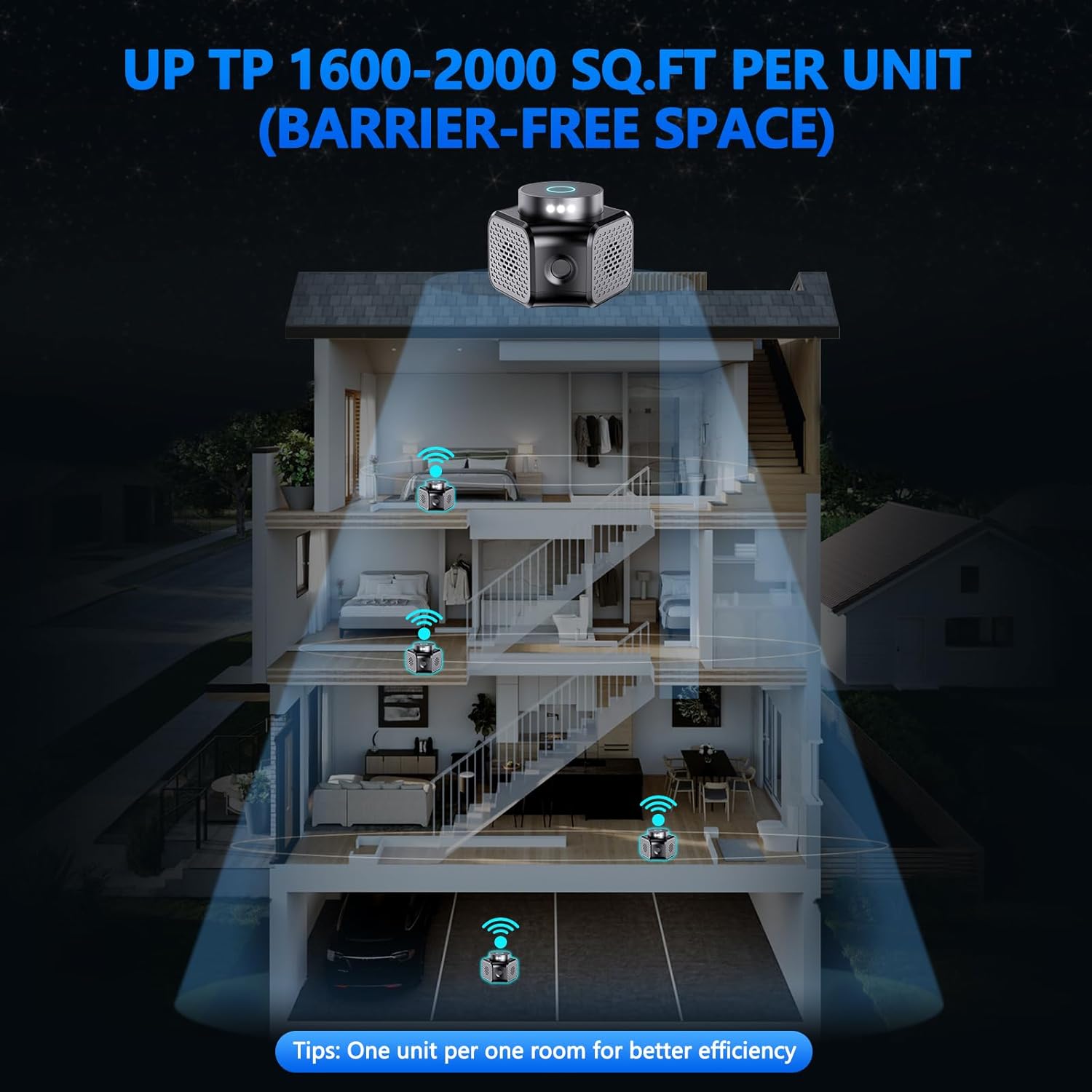
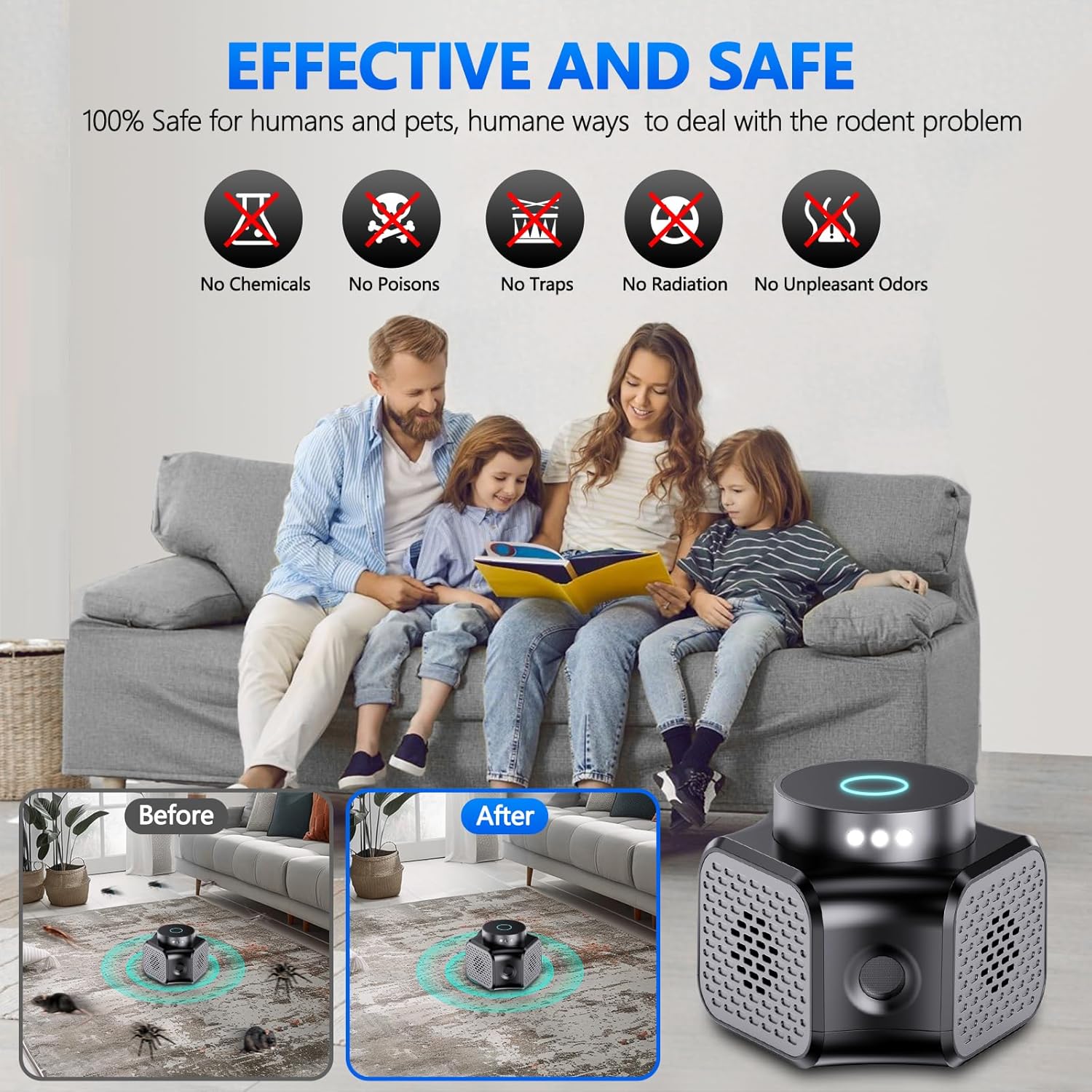
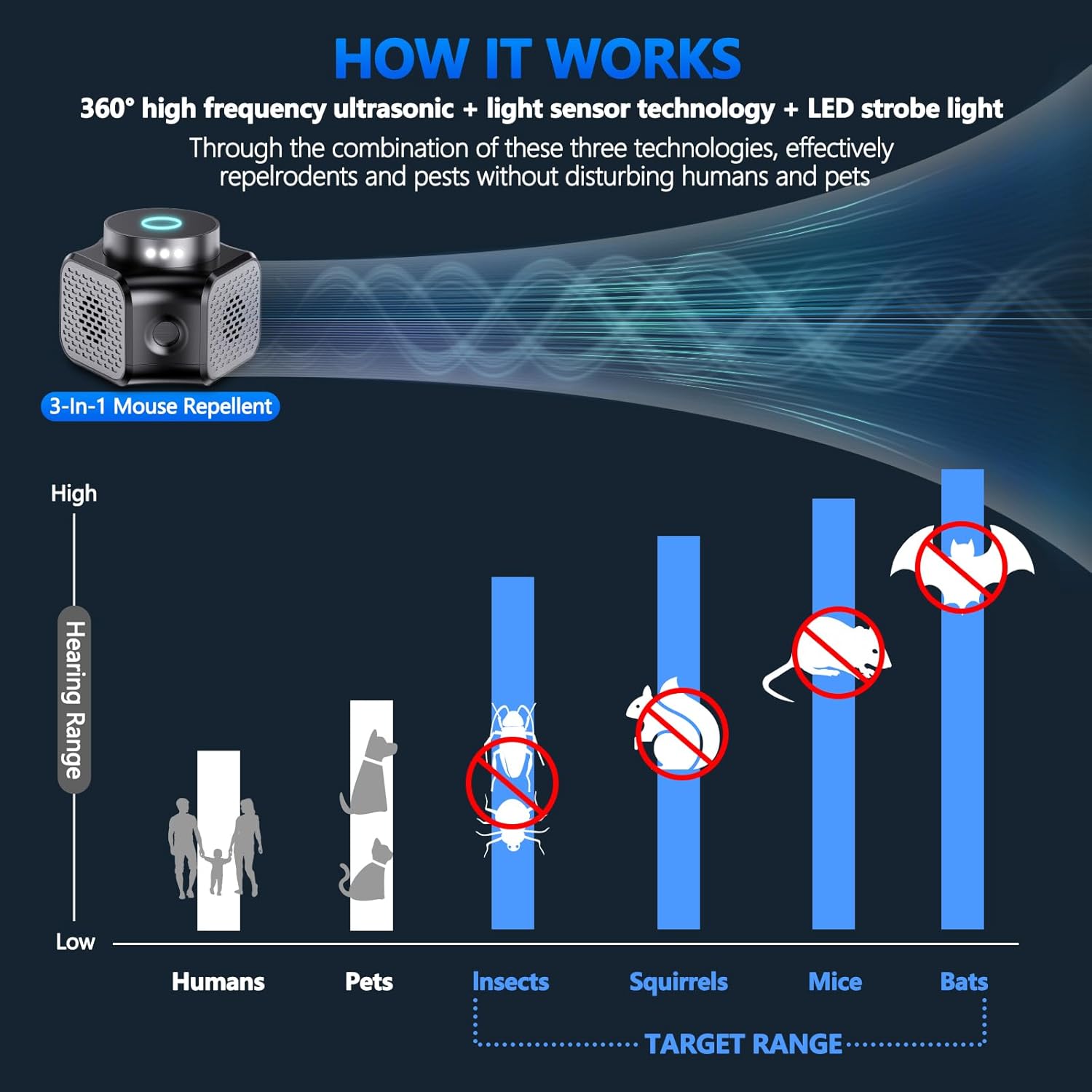
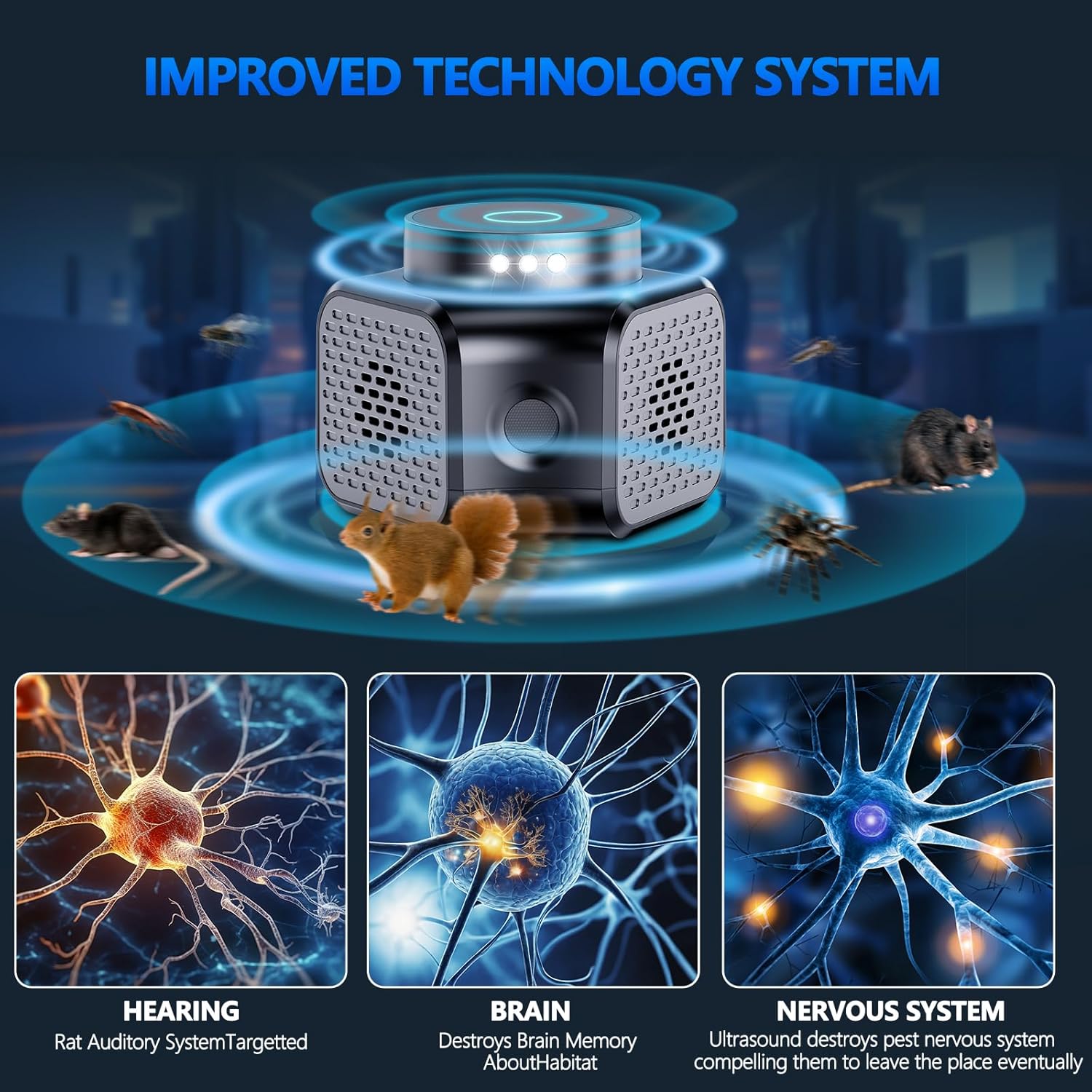
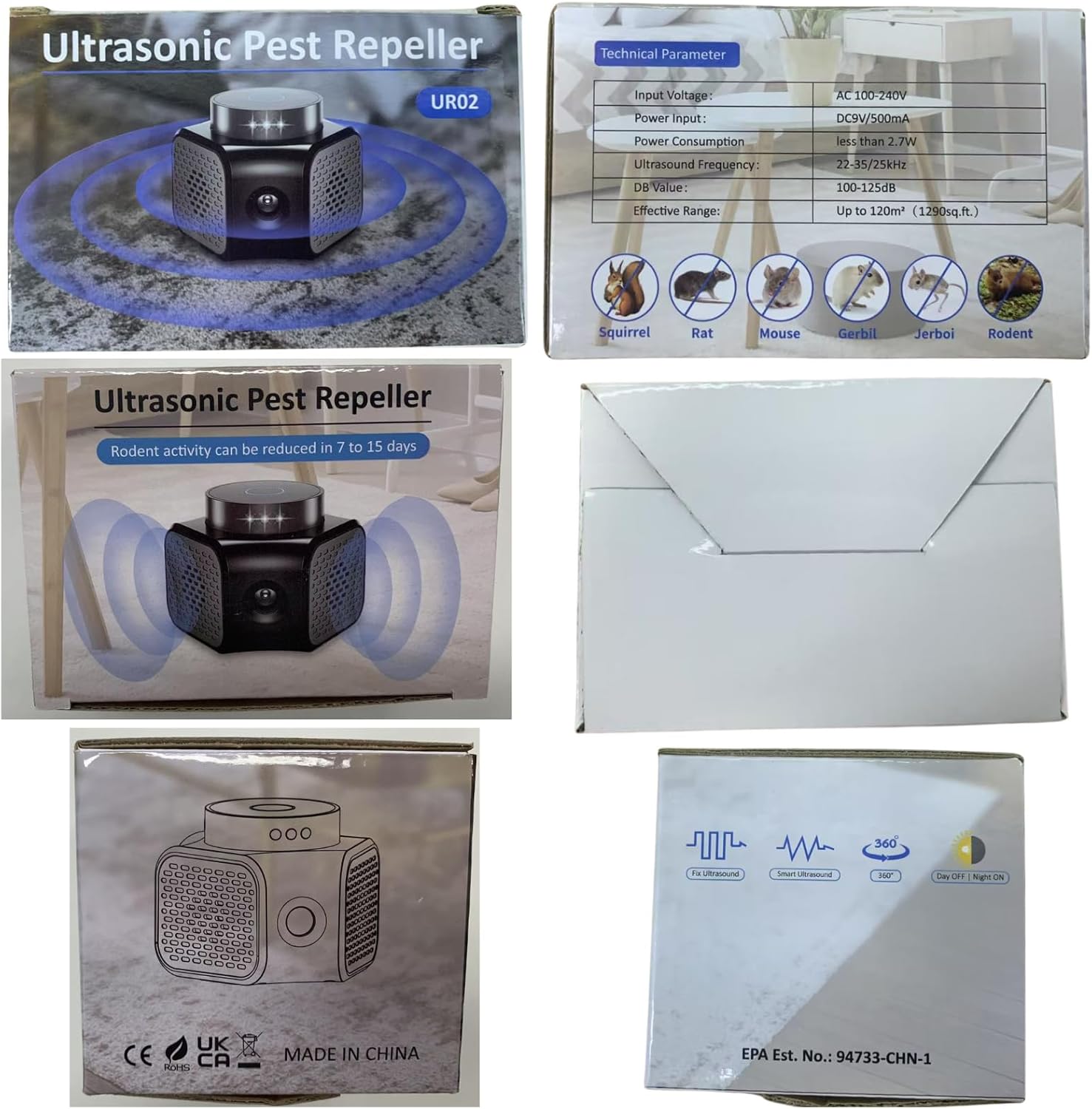
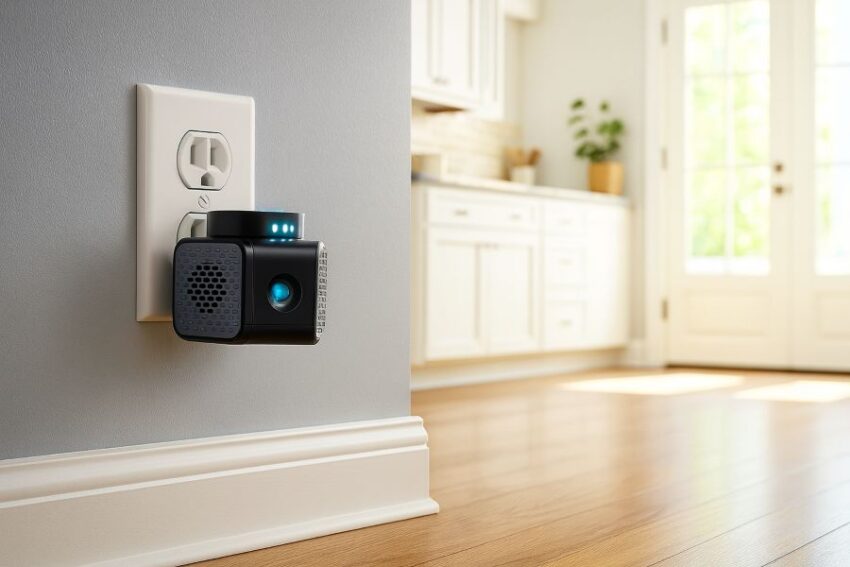
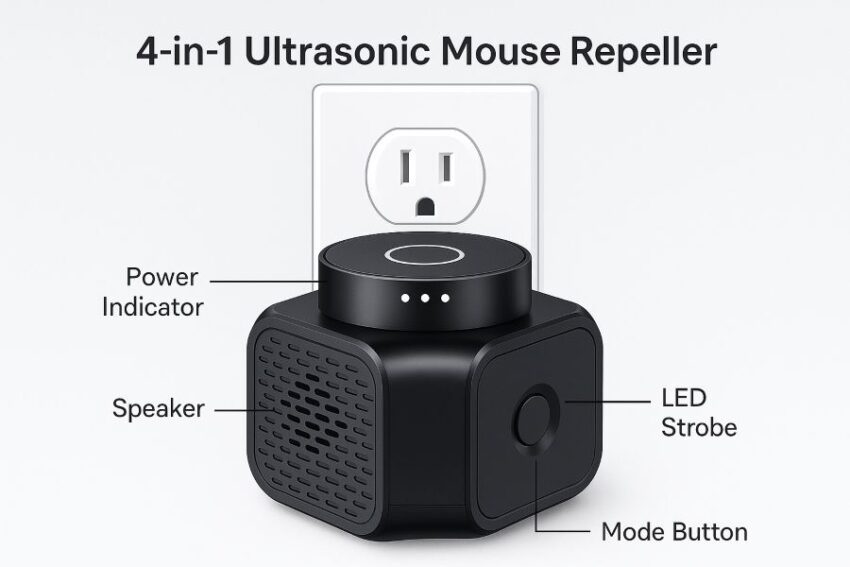
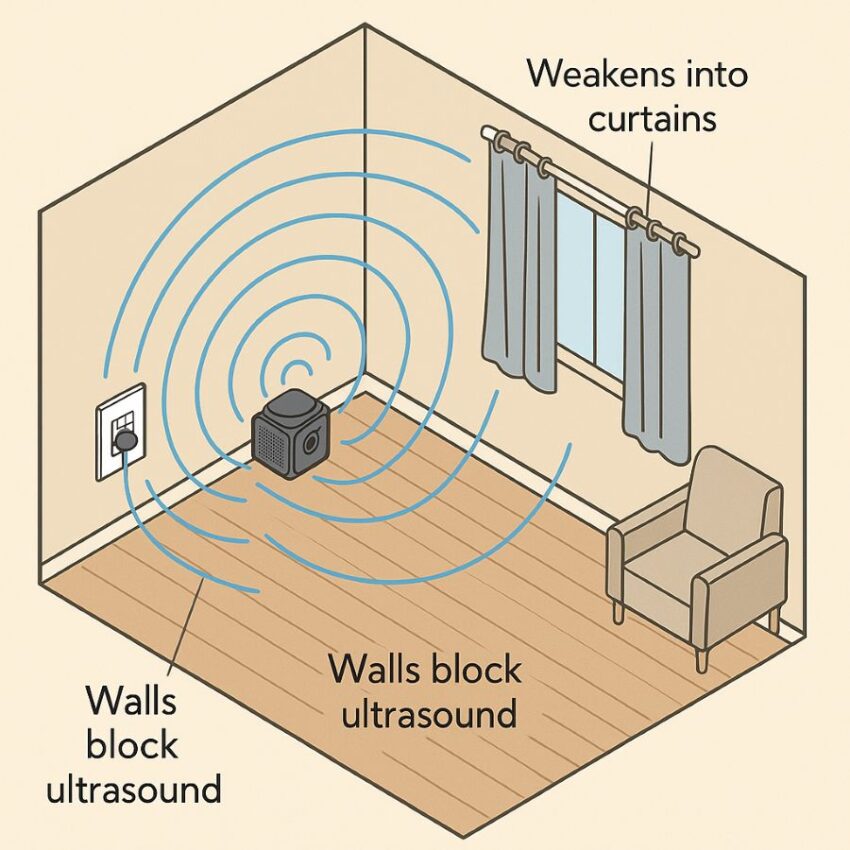
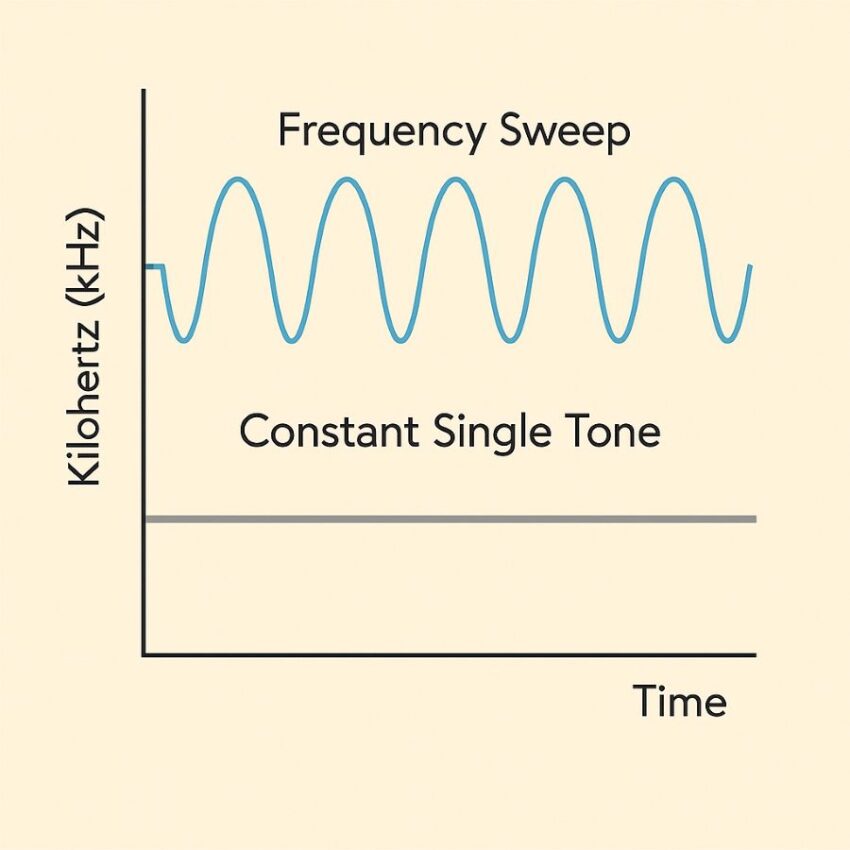

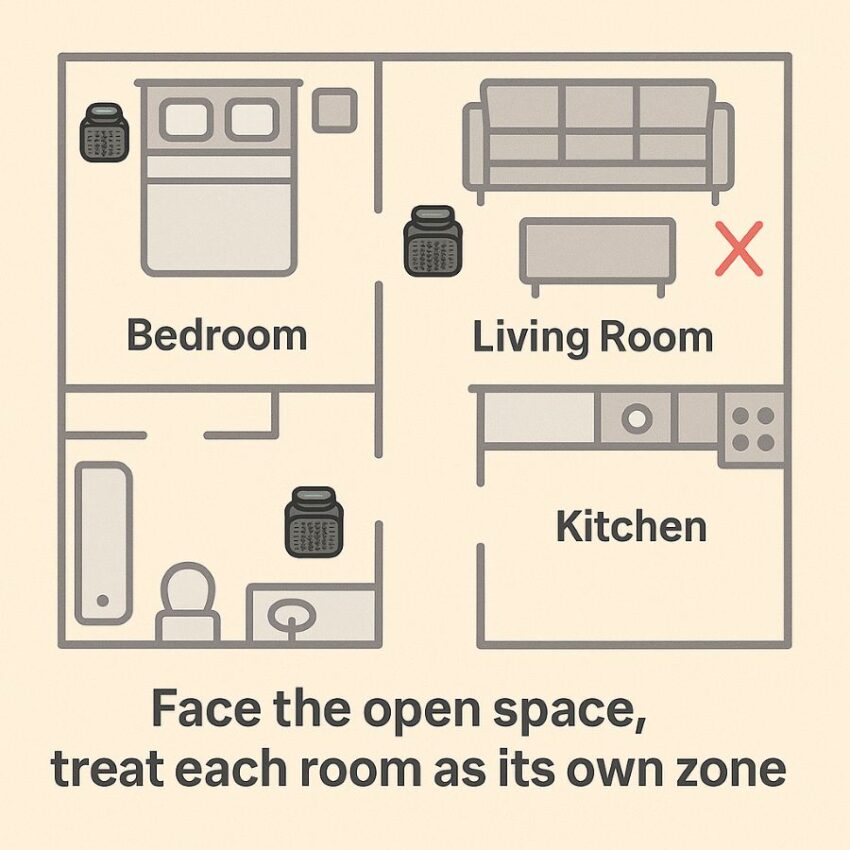
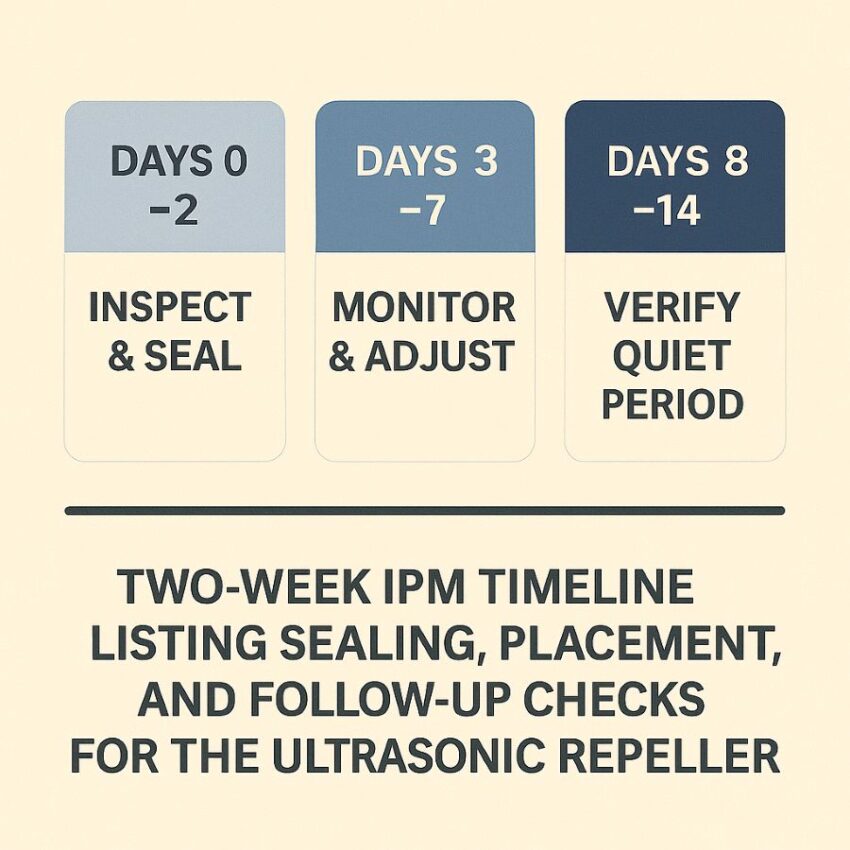
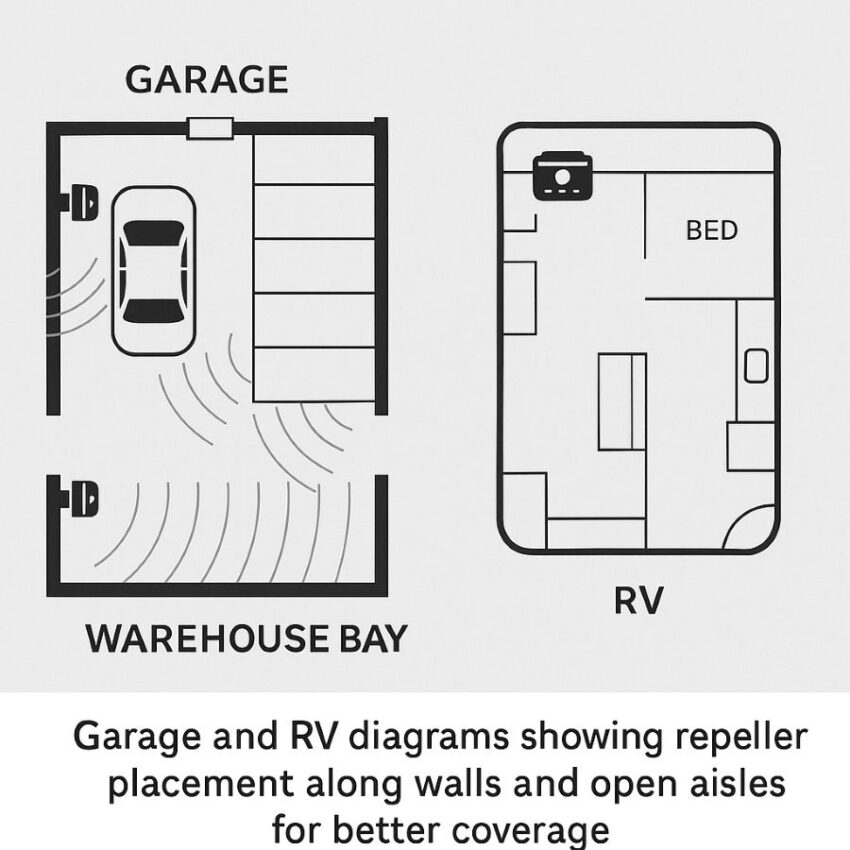
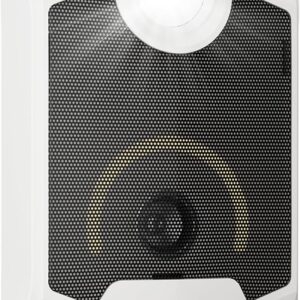
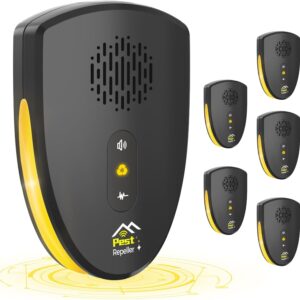
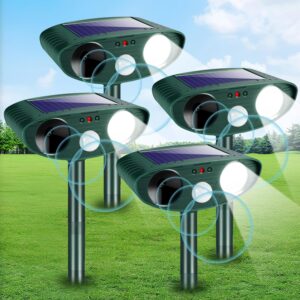
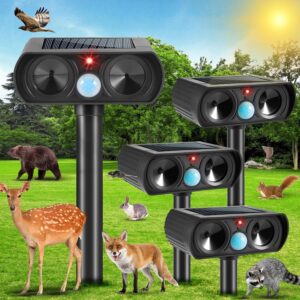
Reviews
There are no reviews yet.